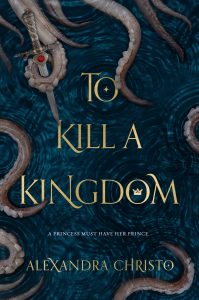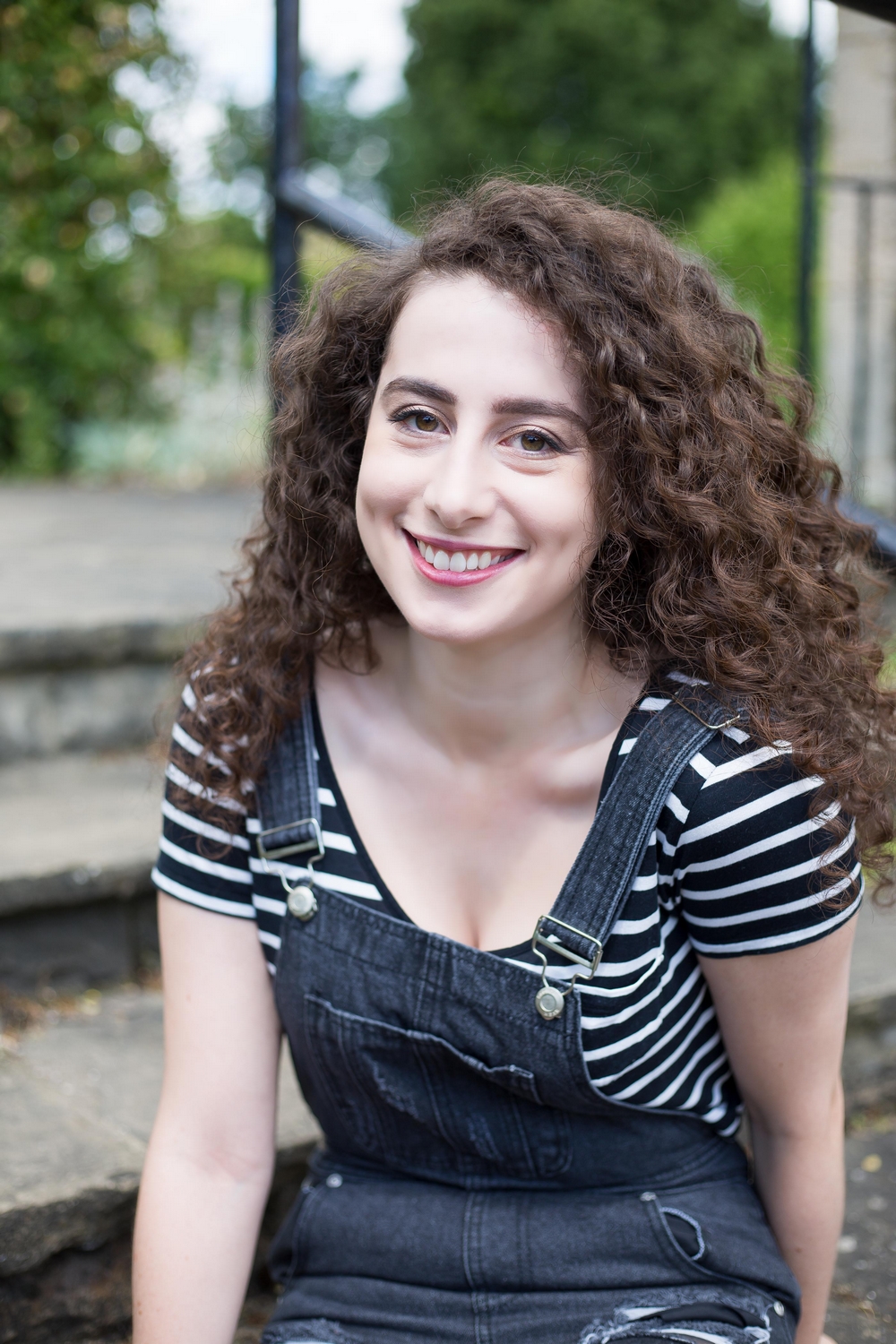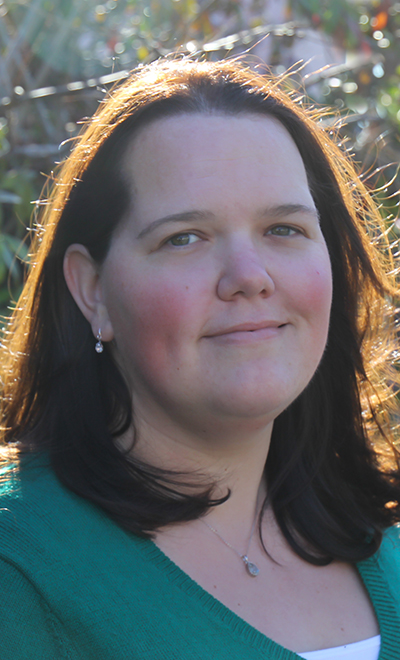 To Kill a Kingdom presents an alternative telling of The Little Mermaid, one much darker than we’ve ever seen before. This book is available now from Fierce Reads, and MuggleNet jumped at the chance to read a review copy and to also provide a copy to one lucky reader! We also seized the opportunity to interview the author of this darkly beautiful and twisted tale, Alexandra Christo. Read on to learn about the inspiration for her first published book, scenes that had to be cut from the book, and even whom she would cast if the book were ever made into a film!
To Kill a Kingdom presents an alternative telling of The Little Mermaid, one much darker than we’ve ever seen before. This book is available now from Fierce Reads, and MuggleNet jumped at the chance to read a review copy and to also provide a copy to one lucky reader! We also seized the opportunity to interview the author of this darkly beautiful and twisted tale, Alexandra Christo. Read on to learn about the inspiration for her first published book, scenes that had to be cut from the book, and even whom she would cast if the book were ever made into a film!
It’s easy to see your love of the classic tale of The Little Mermaid in this book, both the Disney and the original Hans Christian Andersen version. What was your favorite part of either story, and how did they influence you when writing To Kill a Kingdom?
When I read Hans Christian Andersen, I was mesmerized by its dark beauty – I loved discovering that the tale I’d grown up thinking I knew was so much more sinister than I originally thought. But also how similar it was. At its core, it was still the story of a girl wanting to forge her own path and find love.
I wanted to flip that concept of finding love on its head (with Lira literally stealing hearts) and give my female main character some agency in her own story, but I was still so intrigued by that idea of this mystical creature trying to pave her own way, go against the grain of what was expected of her, and literally transform into someone (or something) else.
I think that’s a feeling a lot of us can relate to and is a real humanizing element in To Kill a Kingdom. Lira might not want to be human, but she does want to be her own person, free from her mother’s tyranny. And it’s only once she’s cursed that she gets to explore those possibilities and think about who she is. What makes a monster? Is evil something she was born with or that was thrust upon her? Does she want to save the world or end it?
The Hans Christian Andersen tale also doesn’t have a traditional happy ending – the mermaid dies and dissolves to sea-foam (though she does get a shot at redemption). I liked that idea of sirens leaving behind nothing when they die and almost fading into obscurity. So I took that and threaded it through To Kill a Kingdom, which becomes a key motivator for Lira to maintain her murderous legacy. After all, when she dies, there will be nothing left behind but a memory, or a story, of who she was. And so she had to make a name for herself because her name is all she is.
Of course, the movie played a part too! When I first saw the Disney film, I fell in love with the idea of uncovering an entirely new world – the idea that there were creatures living parallel to us, with their own customs and desires, was such an interesting concept to me and something I mirrored in To Kill a Kingdom.
The sea kingdom has its own laws and hierarchies, and various species with their own roles and desires. Sirens are beautiful but deadly, hunting humans for sport and tradition (and, man, do they hate humans). But mermaids are more grotesque fish-like creatures who yearn for humanity and eat human hearts in hopes of transforming into humans. They’re a lower species whom the siren royalty are constantly at odds with. And of course, there are mermen – brutal creatures, chosen as both mates and soldiers, who crave war and bloodshed.
It was fun to pull threads from both stories, as well as Greek mythology, and create a brutal new world for my characters to navigate!
What was it like to have your first book published, and could you tell me about your journey in getting published?
Being an author is a dream come true. The deadlines are intense, and it’s filled with late nights and endless emails, but I still love every single moment. My job is literally thinking up new worlds and sending stories out into the wild, which people on the other side of the globe might read. There’s a kind of magic to it.
Being a writer was all I ever wanted to do (aside from a couple of years as a teenager when I was convinced I would become a Spice Girl). The first book I wrote and queried to agents was a modern-day fantasy about a group of friends on a ghostly quest. I thought it was the best thing ever (spoiler alert: it wasn’t) and queried to about 70 agents.
Out of those 70, only a handful were even remotely interested.
I always say that publishing is 20% writing and 80% having really thick skin – you’re going to get rejected, and when your book is published, you’re going to get bad reviews. But that’s okay; you can’t please everyone. And it’s worth it in the end.
To Kill a Kingdom happened by chance. Out of the few agents who got back to me, one asked to see my other stories too, and so I sent her a bunch of random ideas I had been working on. One of those was To Kill a Kingdom (which I had only written a few chapters of). She loved it and decided to sign me.
And so I had to shelve that other manuscript I was sure was the Absolute Best, one I had finished and was ready to go, and start from scratch with this new book I had written only a few chapters of. Suddenly, I had a deadline, and the next thing I knew, we were pitching to publishers on a partial manuscript. It was a whirlwind.
To Kill a Kingdom went to auction, and it was intense (auctions are a way to sell a book to publishers by asking them to compete/bid for the rights). I was at work and kept having to sneak into the stairwell to talk to my agent and get updates on what was going on. It was so fun and nerve-wracking, and I didn’t know what to do with myself when I got that final call to say we officially had a deal.
It seems like so long ago now. We signed the deal back in 2015, and it wasn’t until 2018 that To Kill a Kingdom came out. Some people don’t realize how long the lead-times in publishing can be!
I spent so long telling people that I had a book, I think they thought I was lying until I could finally point to it on shelves, two years later, like, see: I TOLD you!
Did you have any say in the cover art?
Covers are a weird thing, and how much of a say an author gets depends on their publisher. It can vary, and I know authors who had no say and authors who commissioned the design themselves.
I’ve been really lucky in my experience, and my publishers are super collaborative and happy to take on board ideas and get my thoughts on the designs. It’s a wonderful experience, and I couldn’t ask for a better team to make my books pop on the shelves.
I was so pleased when we nailed the final cover for To Kill a Kingdom, and the cover we’re working on for my next book, Into the Crooked Place, is just as epic!
Not many villains these days are quite as irredeemable as the Sea Queen – how hard was it not to give her some redeemable quality that would give Lira emotional pause in her mission?
One of Lira’s key struggles is trying to discover who she is away from her mother’s influence and if being a monster is at her core or whether it’s something she was forced to become (nature versus nurture and all that jazz!). She has to discover her humanity.
But the Sea Queen sees humanity and love as a weakness, which adds a new layer to Lira’s journey: It’s not just about changing who she might become but challenging who her mother is. The Sea Queen is from a different time, with different attitudes. She sees humans as the enemy – she was raised in a brutal and cutthroat world and is passing on those traditions. She believes her way is the only way. Then Lira, the new generation, comes along and questions those old ideals and challenges that authority.
I also really wanted to explore the idea of a not-so-perfect family dynamic. Lira’s mother is abusive, plain and simple. And Lira doesn’t have to put up with that just because they’re family. I think that’s an important message for young kids today: You don’t owe anyone your loyalty if they haven’t earned it.
There was a lot of wordplay in this book, which reminded me very much of faerie bargains or the rules for making wishes. Everything Elian says and does, and even Lira to an extent, is done on purpose, and all is revealed to the reader at just the right time. How did you manage to balance what to reveal and when as you were writing these conversations and interactions with the many characters the duo encounters during their journey?
Multiple drafts and an amazing publishing crew who can spot all my plot holes!
Writing a book takes a lot of time, and I add in plots like layers, a few new ones with each draft. I always say that first drafts are like the skeleton – I get all the basic bits down – then with each draft, I add a new layer of skin and start delving into all the complexities. It’s kind of a gross analogy, but it’s also accurate.
I definitely didn’t have all the plot twists worked out when I first started, and when to pepper hints in, or when to reveal things, took many drafts. My agent and my editor were invaluable with helping to fine-tune.
With so many kingdoms to explore, were there any characters or places that you had to cut that you wish had made it into the book, and can you tell us about them?
SO. MANY.
In earlier drafts, Elian had a duel with a childhood friend while in Midas, which explored a lot more of the customs in Elian’s kingdom and touched more on his dynamic with his father. It was so much fun to write and one of my favorite scenes, but it slowed the pacing too much, so I had to ax it!
I also had a lot more members of the pirate crew. At some point, Elian’s close circle was made up of about eight, and I loved playing with their dynamics and the different roles they each had on the ship. There were lots of drunken card games and buccaneering.
There are also 100 human kingdoms in this world, and I got to briefly touch on only a few, but I actually wrote mythology/short stories for every single one. I’m a glutton for punishment, I guess! But it really helped me to know how the different territories within the human world worked, including the languages they spoke and all of their different laws and how these might impact Elian and Lira when, or if, they ever traveled to them.
As I was reading this book, I could picture this as being a great film – I know you have already done a fan-cast for Lira and Elian, but I am wondering whom you would see as Khalia, Kye, Madrid, Sakura, and of course, the Sea Queen?
Thank you! I love fan-casts – Sophie Turner and Avan Jogia are still my perfect Lira and Elian. As for the rest of the gang . . .
For Kahlia, Elle Fanning has that haunting and also kind of deadly-looking innocence.
For Kye, I think Adam DiMarco nails the cheekiness (he was so good in The Order!).
For Madrid, Imani Hakim would be the ultimate badass.
For Sakura, I think Lee Chae-rin (a.k.a. CL) would be so freaking cool.
For the Sea Queen, that’s a lot harder, as she is very much inhuman, but I always refer back to this art when people ask me how she looks. If anyone could make it work, I think Lena Headey would be perfect.
***
Thanks so much to Alexandra for taking the time out of her busy book-touring schedule to answer our questions!
Now that you’ve heard from Alexandra and learned more about Lira and Elian’s world, we know you want to get your hands on a copy of To Kill a Kingdom. Enter our giveaway here, which is open through May 3 at 11:59 p.m. ET. You can also purchase a copy of To Kill a Kingdom here!




